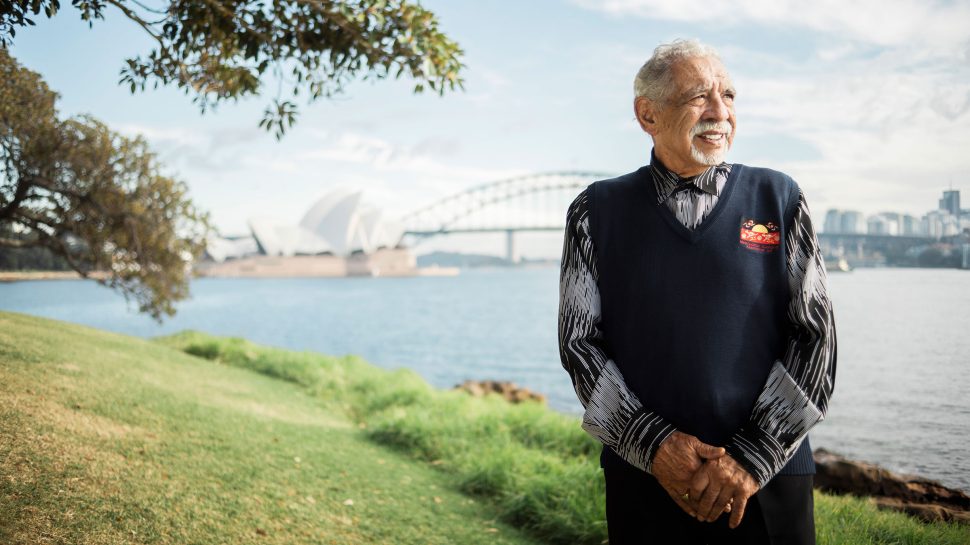Knowing Naarm: introducing the Traditional Place name of Melbourne
As a Senior Wurundjeri (wuh·ruhn·juh·ree) Elder of the Kulin (cool-in) Nation, Aunty Joy Murphy is thrilled that Melbourne’s Traditional Place name—Naarm (nar-m)—can now be used when addressing letters and parcels through Australia Post.
The significance of the Traditional Place name, Naarm
“In the Woiwurrung (woi-a-rung) language of the Kulin nation, Naarm means ‘place’,” explains Aunty Joy Murphy. It signifies that the area was an important meeting place for the language groups of the Kulin nation, a collective of five Aboriginal clans: Wurundjeri, Boonwurrung (boon-wuh-rung), Wathaurrung (wo-thuh-rong), Taungurung (tan-a-rong) and Dja DjaWrung (jah-jah-rong).
The Kulin nation has inhabited the area for around 40,000 years, and prior to colonisation, was a nation of more than 20,000 people.
Aunty Joy was born in Healesville and her family has always called Wurundjeri land their home. In fact, she proudly carries the legacy of her great-great uncle, William Barak, who served as the last traditional Ngurungaeta (na-run-getta) or head man of the Wurundjeri-Willam clan.
An officer of the Order of Australia and honorary professor at Swinburne University, Aunty Joy is often called on to give the traditional Welcome to Country at many events and to many distinguished visitors. For her, having Traditional Place names acknowledged on Australia Post letters and packages is special.
“It means so much to our community, for who we are, and where we come from,” says Aunty Joy. “I applaud Australia Post. It makes me feel so proud, so happy. And with their distribution everyone will know about our Traditional Place names around the world.”
“Being able to see Traditional Place names and learn them gives us our right of identity here in Naarm—we want people from wherever they come from to understand that we have a belonging.”

Introducing Traditional Place names at Australia Post
In November 2020, Australia Post made a significant stride during NAIDOC Week by revising the addressing guidelines to incorporate Traditional Place names. This progressive move aimed to recognise and honour the enduring connection between Indigenous Peoples and the land they inhabit.
After Gomeroi (guum-a-roy) woman Rachael McPhail advocated for the inclusion of Traditional Place names in mailing addresses on various social media platforms, an overwhelming response of interest and support from the general public followed suit.
To build on this important initiative, Australia Post has created an empowering video on what Traditional Place names mean to Indigenous peoples—in their own words.
The video features Indigenous Elders, like Aunty Joy, as well as Indigenous community leaders and business owners, sharing and celebrating Indigenous language and inspiring everyone to use Traditional Place names.
For Aunty Joy, having all Australians use Traditional Place names when addressing letters or parcels through Australia Post is an acknowledgement of the past and the future.
"Reclaiming traditional language is an honour,” says Aunty Joy. “An honour that we're giving back to the ancestors when they spoke their language forever.”
Embracing the movement

For Laura Thompson, proud Gunditjmara (goon-dich-(uh)-mah-ruh) woman embracing Traditional Place names is a no-brainer. Laura is also co-founder of Aboriginal-led and controlled, and majority Aboriginal-owned social enterprise, Clothing the Gaps.
A dynamic fashion label located in Naarm that celebrates Aboriginal people and culture, Clothing the Gaps has a huge online business which uses Traditional Place names in packaging every day. But Laura has seen more people, businesses and organisations embracing the practice.
“We write on parcels and we send letters every day, and the mere act of just acknowledging the Traditional Place is one way to start the truth-telling process and recognise the First Peoples as the true custodians of this country,” says Laura.
“There are more and more people choosing to use not just Traditional Place names but also traditional names of spaces like lakes and rivers and mountains and other areas.”
For Laura, embracing the use of Traditional Place names strengthens the country as a whole.
“Aboriginal language is in our everyday vocabulary. That's a great thing. There are over 250 language groups in this country, and the more we start to use and include them in everyday language, the better Australia will be,” she says.
“This is part of the reconciliation in this country. And it's a simple act. I think this is a great thing that we can do for future generations.”
Embrace your place: start using Traditional Place names on your parcels today
To find an area’s Traditional Place name, check the map on the AIATSIS website or get in touch with Aboriginal and Torres Strait Islander Land Councils or Cultural Centres in your area.
Using Traditional Place names
Using Traditional Place names
Here’s a handy guide to addressing mail and parcels with Traditional Place names.



